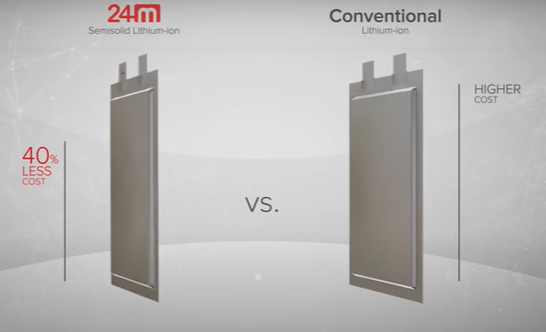New Public and Private Funding Drives Energy Storage Solution Development
Freyr Battery and Quidnet Energy have raised funds to advance their battery and pumped hydro energy storage solutions.
Private and public investment dollars continue to flow into the energy storage sector as two companies have announced recent funding. Based in Norway, public company Freyr Battery has raised $264 million in a public offering of its common shares to move forward with its battery manufacturing initiatives, while early-stage start-up Quidnet Energy has secured $10 million in ARPA-E (Advanced Research Projects Agency-Energy) funding for continued development of its novel pumped hydro storage solution.
Energy storage supporting renewable power generation. Image used courtesy of Freyr
The technologies and scale of investments are significantly different, but both companies are working to address the need for better energy storage solutions as part of the transition to sustainable and renewable energy sources globally.
Big Investments in New Battery Manufacturing Capabilities
Freyr Battery was founded with the stated goal of developing industrial-scale clean battery solutions for global energy storage systems (ESS), e-mobility, and EV markets. The company initially listed on the New York Stock Exchange in July 2021 with a $705 million equity investment.
Freyr will be using its recent funding to support ongoing construction of its first Giga Arctic battery manufacturing facilities in Norway; investment in the Giga America clean battery manufacturing project based in Coweta County, Georgia; and other general corporate expenses. The Giga Artic facility is scheduled to begin battery production in the first half of 2024.
Key to the company’s overall strategy is a technology licensing deal signed in 2020 with 24M Technologies that allows Freyr to use 24M’s SemiSolid lithium-ion battery platform technology for its battery manufacturing.
Based on IP developed at MIT, 24M’s technology claims to have the potential to reduce Capex for lithium-ion battery manufacturing by more than 50 percent by reducing the number of steps required for battery cell manufacturing while still using conventional lithium-ion raw materials. It also promises the potential for higher energy density cells without compromising safety or reliability.
If it delivers, 24M’s technology could be a real game changer for Freyr, particularly in the critical long-duration energy storage market where lithium-ion storage technologies have generally been too costly. The company now has the funding to push its strategy forward.
To help commercialize its technology, Freyr also announced a downstream joint venture with high-efficiency electric motor and energy storage system manufacturer Nidec. The new Nidec Energy AS will be tasked with developing and manufacturing integrated battery energy storage solutions (BESS) for the global energy storage market, based largely on Freyr’s battery technology.
Freyr has big ambitions for its battery technology, planning to install 50 gigawatt-hours (GWh) of annual battery cell capacity by 2025, 100 GWh by 2028, and 200 GWh by 2030.
Semi-solid electrodes from 24M reduce lithium-ion cell manufacturing costs. Image used courtesy of 24M
A Novel Approach to Pumped Hydro Storage
Quidnet Energy has developed an innovative pumped hydro storage solution that is more widely deployable and lower cost than traditional pumped hydro solutions. Pumped hydro has long been considered a viable option for long-duration energy storage, but broad adoption has been limited due to costs and dependency on the availability of elevated terrain. The company’s novel geomechanical pumped storage addresses these limitations.
The concept behind the Quidnet solution is to use electricity during periods of high supply to pump water down (as opposed to up in traditional systems) into the ground for pressurized storage in cavities between rock layers. During periods of low electricity supply, this reservoir of pressurized water can then be used to drive turbines that produce electricity. The process repeats as needed using a closed-loop water system. The simple idea here is to use ground pressure, as opposed to gravity, to store energy.
To help contain costs, the Quidnet solution uses conventional drilling technology and off-the-shelf hydropower equipment.
The ARPA-E funding will help Quidnet execute on its project with CPS Energy in San Antonio, Texas, to scale its GPS installation to a 1 MW/10 MWh commercial system that can provide CPS Energy with 10-plus hour, long-duration energy storage.
Founded in 2013, Quidnet Energy develops products and technology in support of the global transition to low-carbon energy. The company has received more than $35 million in funding to date from government and private sources including Bill Gate’s Breakthrough Energy.
Geomechanical pumped storage system. Image used courtesy of Quidnet Energy
Featured image used courtesy of Adobe Stock









